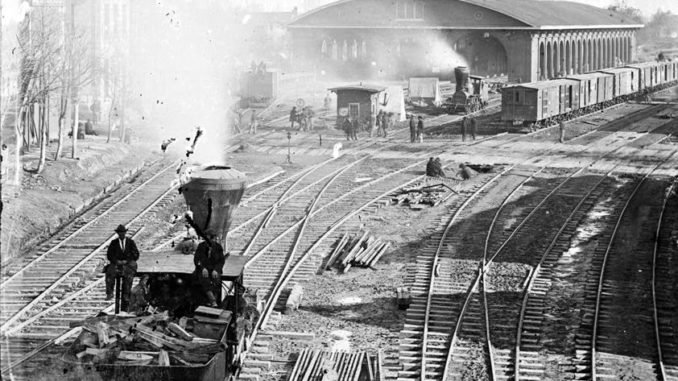
Atlanta is home to the world’s busiest airport, Hartsfield-Jackson Atlanta International Airport. As such, the city is an essential link in the nation’s transportation hub.
The role is hardly a new one for the city. Turn back the clock a century, and Atlanta was the epicenter of the South’s railroad network.
Southeastern Railway Museum Librarian Steve Storey and Assistant Librarian Lloyd Neal co-authored with David H. Steinberg a 144-page book exploring the role railroads played in the region’s development and the many railroad stations along those routes.
The book — “When Atlanta Took the Train” — was published on Feb. 26. Here is their take on the process of writing the book and Atlanta’s railroad history.
What is something people today may not realize about Atlanta’s railroad history?
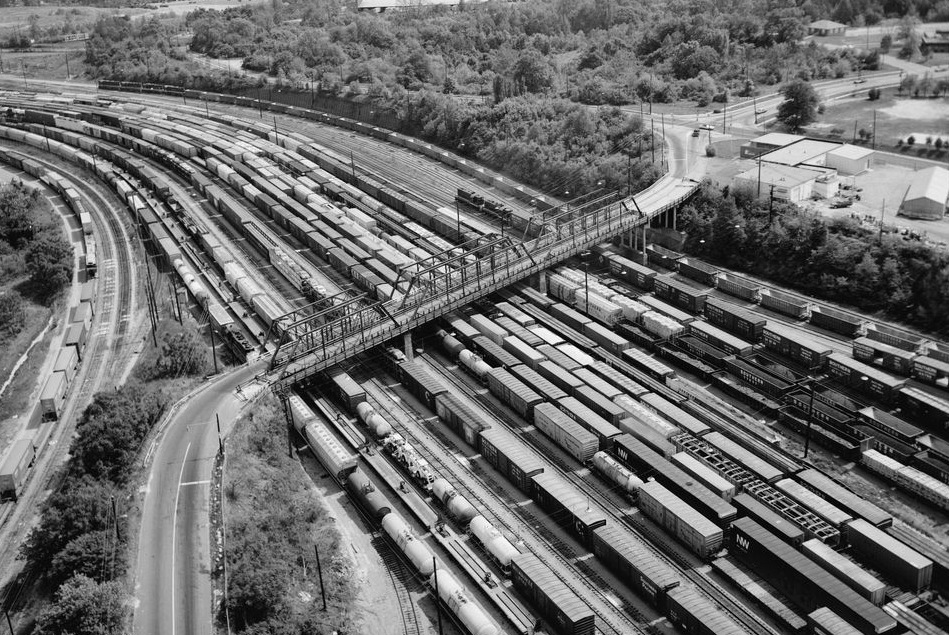
Storey: Many people may not know that Atlanta was effectively an economic development project carried out by state government. The State of Georgia built a railroad — and still owns it to this day — and specified that its southern terminus would be on the south bank of the Chattahoochee River in the middle Piedmont region. Privately owned railroads were then encouraged to build to that terminus, which at the time was a thoroughly rural place.
Can you talk a little about the level of research that went into writing the book?
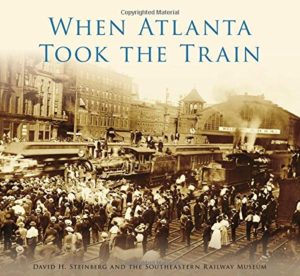
Neal: History authors owe their readers accuracy in the facts presented. You need to have a healthy sense of skepticism of even your own facts. I spent hours checking the dates, locations and the train schedules that applied to my photographs as well as those of other photographers and the text. We had to work with limitations on the amount of text and the caption sizes for the book. Some facts could not be included due to those limits. We tried to supply the facts that we thought would interest the majority of our readers.
What was the most interesting story or fact you discovered in writing the book?
Storey: For me, it was that around 1900 the Atlanta & West Point Railroad had suburban service between downtown Atlanta and College Park with 24 stations along an 8.4-mile route. Today, MARTA operates along the very same corridor, and when I ride a MARTA train through there, I try to imagine what it was like in 1900.
How important is preserving railroad and transportation history?

Neal: I was fortunate to move to Atlanta in 1969 to witness the final years of our two downtown train stations, Terminal and Union. I knew at the time I was seeing the end of an era. It was a time and place I tried to document as best I could as a teenager. I was fortunate to have understanding parents who made trips to drop me off or pick me up from my train trips or photo taking trips.
Atlanta is not a city that preserves old buildings. You have to learn to accept that fact and move forward. I have traveled by train across the U.S. and Canada. I have seen many of the large stations as a passenger traveling through them. You learn to admire the stations and those that maintain them.
A few great train stations still exist in the country, such as Grand Central Terminal in New York City and Terminal Station in Chattanooga. Unfortunately, Atlanta no longer has anything like that. Is that a negative for the city’s cultural heritage?
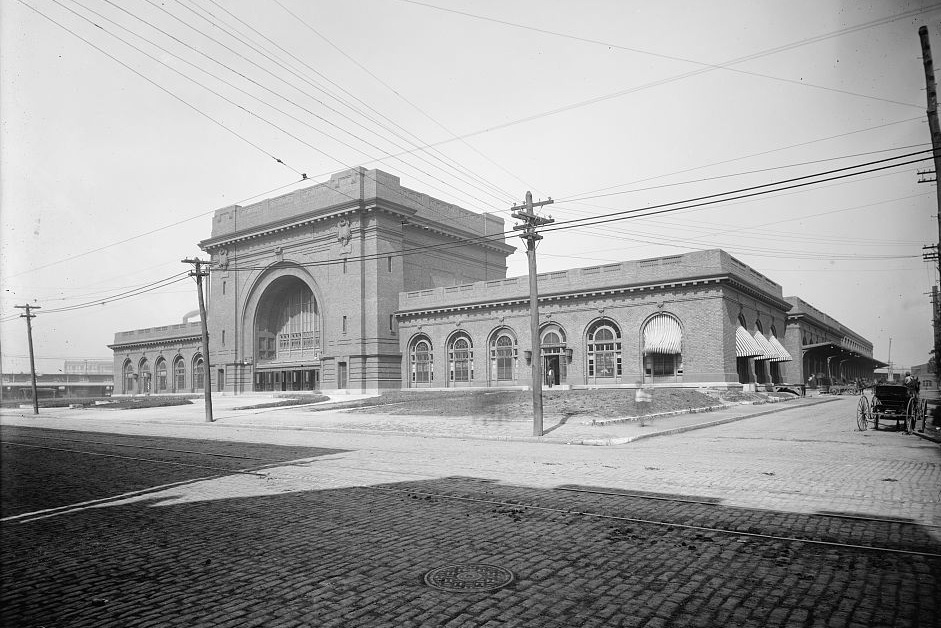
Storey: Atlanta is definitely poorer for not having a grand and historic train station such as those in Philadelphia, Cincinnati, Los Angeles, St. Louis, New York, and elsewhere. Even where the buildings are no longer used as train stations, they add to the historical character of their home cities and remind people of the railroads that built today’s America. Macon saved its impressive Terminal Station, and fine old stations still stand in smaller Georgia towns like Thomasville and Waycross. Atlanta demolished its equivalents in the 1970s and saved only Peachtree Station, which was built as a suburban station.
What should people do to keep our railroad history top of mind?
Neal: Acquiring our book is a good way to see the railroad passenger history of Atlanta. Travel with us to see how Atlanta traveled not too long ago. Hopefully, it will generate your interest for more research on your own about railroad history. We have a big change coming with the possible sale of “The Gulch” where the two downtown train stations once stood. You can see traces now if you know where to look for where the stations were. But, those traces may be wiped clean soon. Visit “The Gulch” while you can.
Where and what is “The Gulch?”
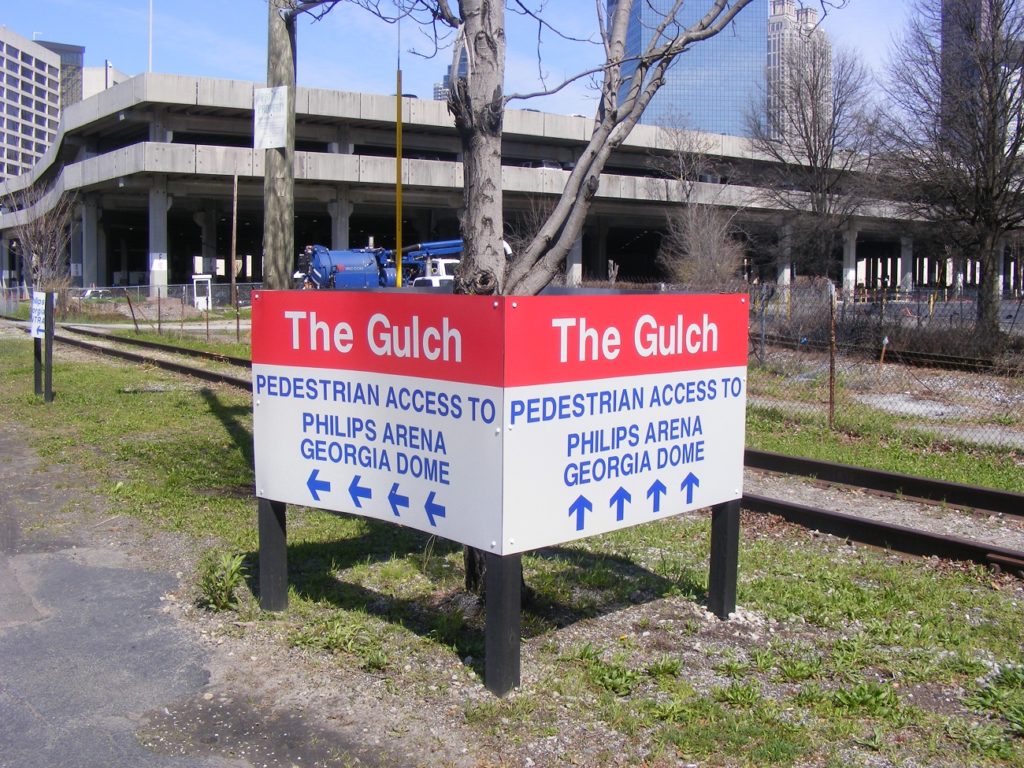
Neal: “The Gulch” or “The Railroad Gulch” is an Atlanta slang term for the general area where the tracks for the former Terminal and Union passenger train stations were located in Downtown Atlanta. The area still has tracks for two major freight railroads going through the area.
Several viaducts surround or pass over the Gulch. This gives the area the appearance of being in a valley or gulch. In fact, the Gulch is at ground level while the bridges are built above to keep street traffic separate from the railroad traffic at ground level.
The Gulch is loosely defined. The area has several parking lots generally at ground level. It has only been in the past four to five years that the parking lots there have erected signs for Gulch parking.
There is no official street address for the Gulch. You can find the area by driving to the parking lots to the west and north of the Richard B. Russell Federal Building at 75 Ted Turner Dr., SW. Either going west on Martin Luther King Jr. Drive or turning west off of Forsyth Street at MLK or Alabama Street.
Generally, the area is northwest of the Richard B. Russell Federal Building, Sam Nunn Federal Center, Five Points Marta Station and south of office buildings on Marietta Street from Forsyth St. to Ted Turner Drive, then south of the CNN Center parking deck. Then it is located to the east of Phillips Arena and Mercedes Benz Stadium. From the Stadium the Gulch is east as you proceed south along Centennial Olympic Park Drive and Walker Street, to turn on Haynes St. Then turning east on Peters Street it is to the north of the street until reaching the intersection with Ted Turner Drive. The Gulch is to the northwest of the old Norfolk Southern office buildings at 100 Ted Turner Drive, SW, and back to the Richard B. Russell Federal Building. Nelson and Elliott Streets east of Walker Street will bring you closer to the Gulch for a block or two in the Castleberry Hill area of Atlanta.
There is also an entrance from Marietta Street over the railroad tracks and under the Phillips Arena into the Gulch. A new ramp that leads down from Centennial Olympic Park Drive into the Gulch Is open to motorists for sports and special events.
